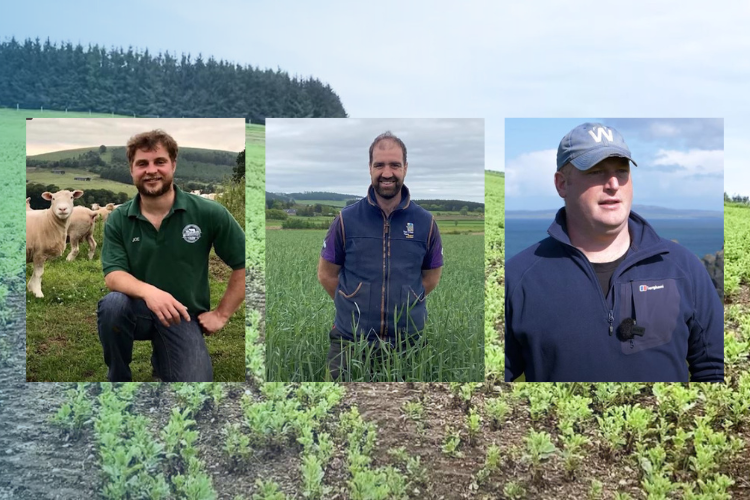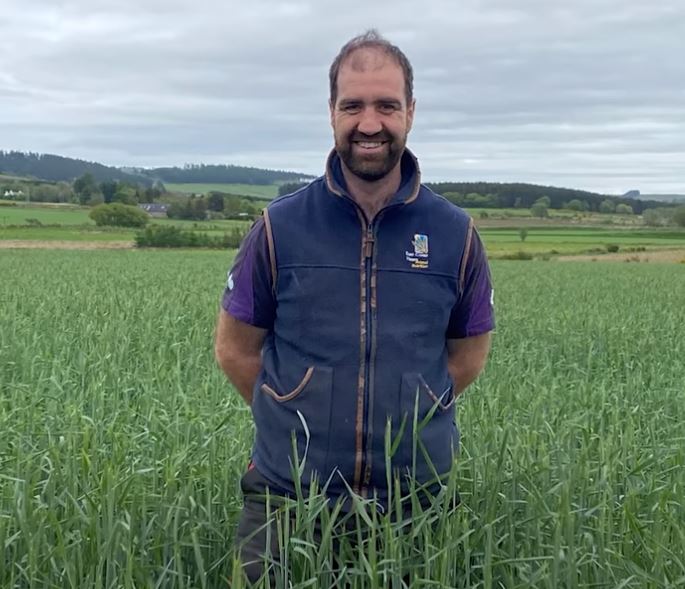Climate Resilience Case Study – Kincraigie Farms
1 February 2024Robert Marshall, Kincraigie Farms, Aberdeenshire

Kincraigie Farms is situated near the village of Lumphanan, in the North East of Scotland. It is a mixed farm extending over 2,500 acres (1,000 ha) of arable and grassland. Cropping on the unit comprises of spring barley (500 acres), winter oats (110 acres), winter rye (40 acres) and winter beans (25 acres). The remaining 1,825 acres is utilised for grassland and silage production for the 500 strong suckler cow enterprise. The cows include both spring and autumn calving cows, with progeny being sold store in local livestock markets.
The business is based in Deeside, which is known for its light soils, that are prone to drying out in the summer. With the climate pattern changing, with extreme weather events e.g. excessive rain in short periods of time, dry summers, late springs, etc. Robert has decided to shift from traditional spring cropping to incorporate more winter crops into the rotation. Allowing the crops to be sown in good conditions in the back end and reduce the risk of late sowing, poor conditions, and the yield penalty associated with a late spring.
Rye
Winter rye has been chosen in the rotation for various reasons, including:
- The crop has the ability to produce a high yield of straw
- Produce a high energy feed from the grain
- A crop with a deep rooting system with tolerance to drought

The growing season presented numerous challenges for the growing crop, in that in the winter conditions were excessively wet, the spring was cold and June was extremely dry, before the summer being very wet. With this unexpected weather the crop stood up very well, proving its attributes as a weather resilient crop.
Sown - Autumn 2022
Harvested - 31st August 2023
Grain Yield - 3.6 tonnes per acre
Straw Yield - 2.25 tonnes per acreAfter harvesting, the grain was bruised and then treated with a urea and enzyme to allow for safe storage and to enhance the protein of the grain for feeding to the cattle throughout the winter.
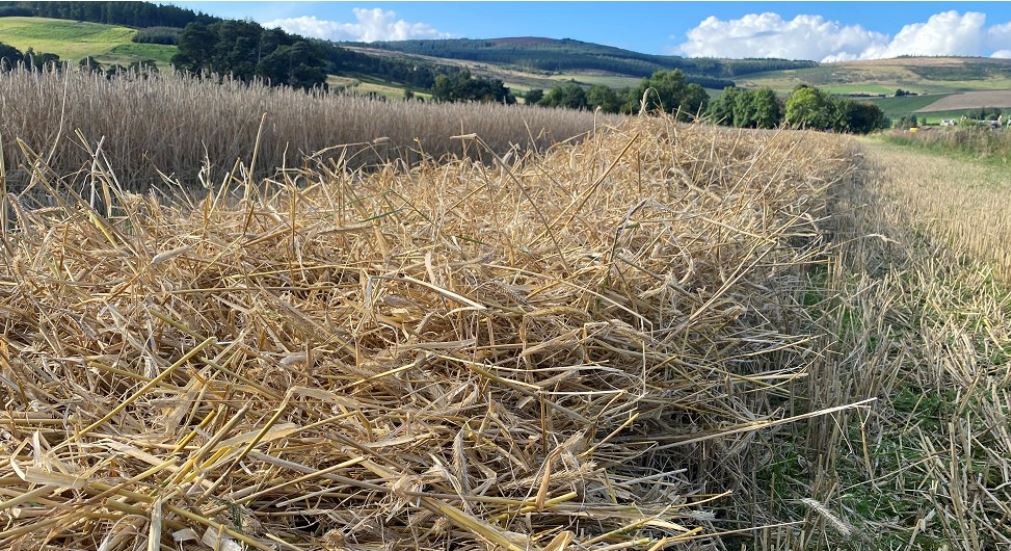
Beans
In 2022 Robert grew spring beans, and then took the decision to grow a winter crop to harvest in 2023. Beans were introduced into the crop rotation for various reasons including:
- To produce home grown protein
- Grow a nitrogen fixing crop
- Allowing for a deep rooting crop that would thrive in dry conditions
Sown - Autumn 2022
Harvested - 10th September 2023
Bean Yield - 1.6 tonnes per acre
After harvesting, the grain was treated similarly to the rye, in that it was bruised and treated with urea and enzyme. This treatment raised the protein in the grain from 22% to 30%. Beans can be susceptible to mould, for this reason, a proportion were stored dry and whole to use later in the winter.
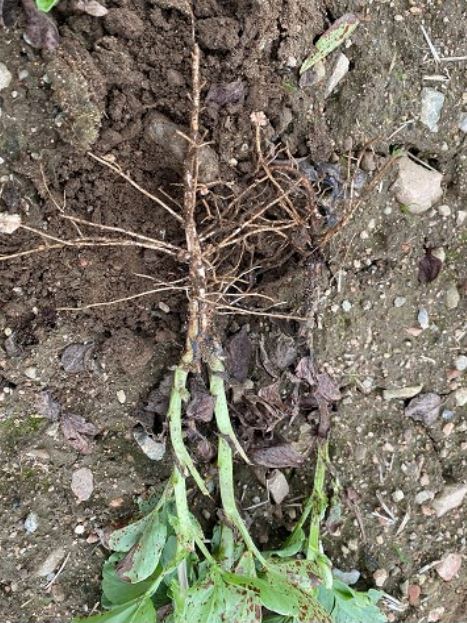
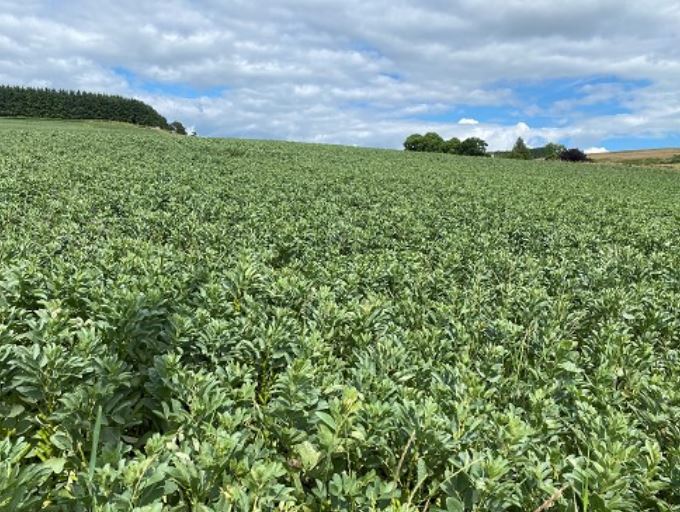
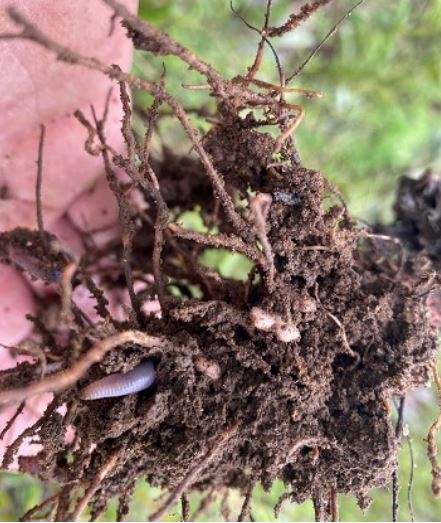
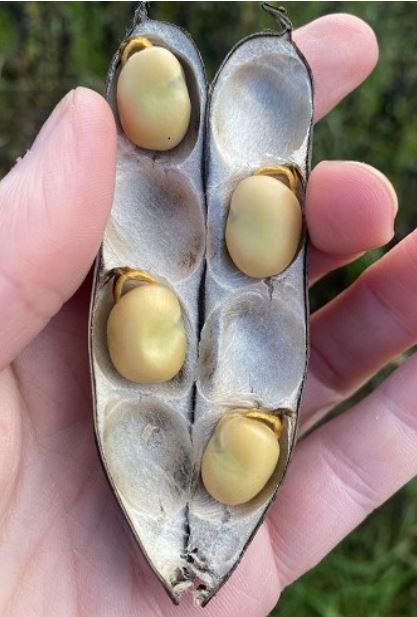
Beans - Spring to Harvest on Camera
In spring 2023, we put a timelapse camera onto the crop of beans. This took a photo every hour of daylight of the crop, we created a video with the footage which can be found below:
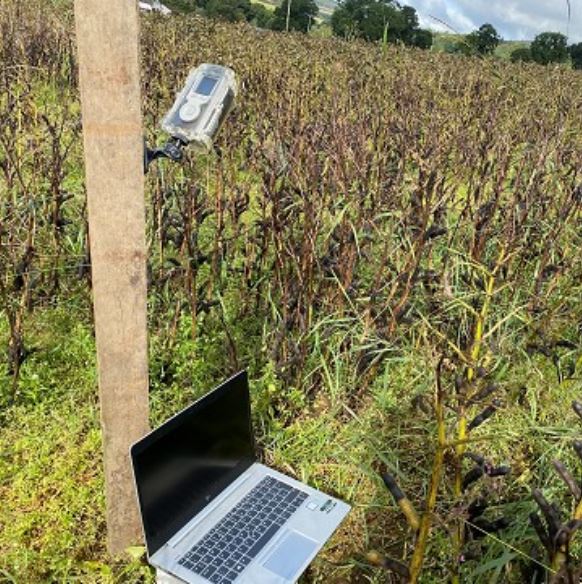
Vlog Series
To hear more about climate resilience strategies please view our vlog series, which features Robert and his beans and rye, along with another two farms, and how they have developed their systems.
Climate Resilience Vlogs | Helping farmers in Scotland (fas.scot)
Sign up to the FAS newsletter
Receive updates on news, events and publications from Scotland’s Farm Advisory Service

